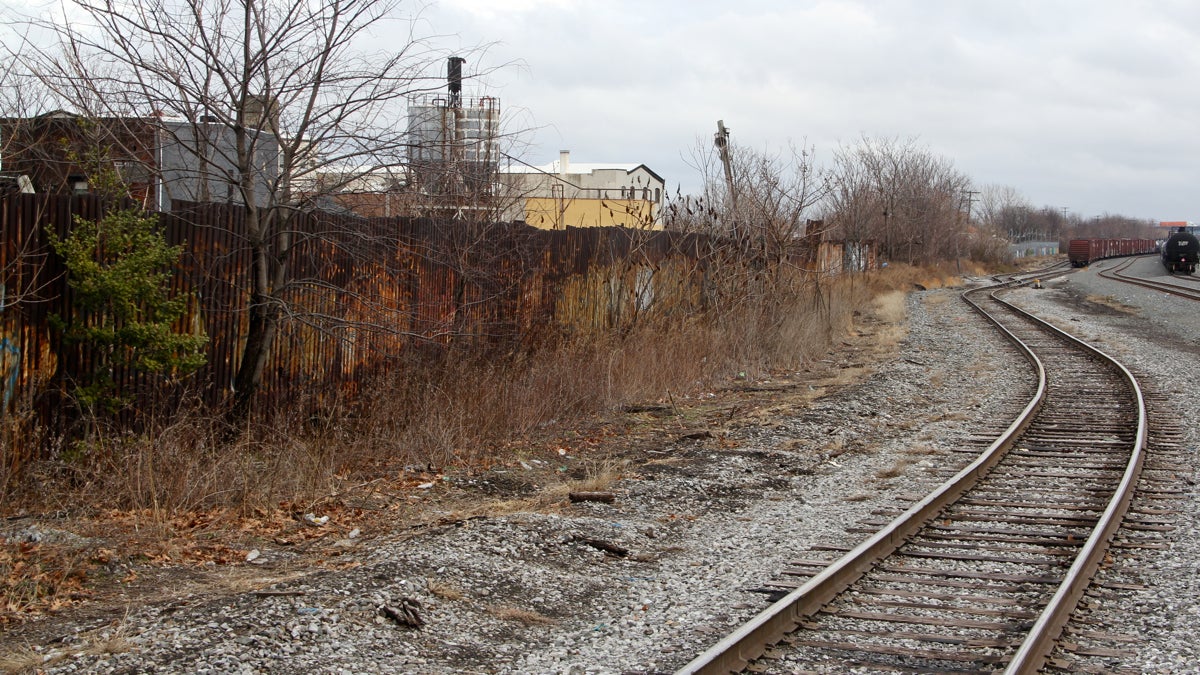EPA grant helps Temple take aim at potentially hazardous waste sites in Kensington

The project will include brownfield sites adjacent to the Lehigh Viaduct, a freight rail corridor located along Lehigh Avenue, between Kensington Avenue and I-95, with the main focus between Kensington Avenue and Tulip Street. (Emma Lee/WHYY)
Temple University is taking the lead on a federally backed effort to clean up and redevelop former industrial spots in Philadelphia’s Kensington neighborhood.
It won’t involve any soil testing or direct cleanups; think of it as “a first step,” said Mahbubur Meenar, assistant director of Temple’s Center for Sustainable Communities.
Through the two-year, $200,000 grant from the Environmental Protection Agency’s Brownfields Program, the university will be working with community groups to come up with a master plan for the two-mile area north of Lehigh Avenue, known as Philadelphia’s Lower North Delaware Industrial District.
“Part of it will be revitalizing the area, part of it will be beautification, part of it will be increasing safety,” said Meenar.
Once the project partners map out priorities, he said, they will identify specific steps needed to make that happen.
Kensington used to be a major transportation and manufacturing hub, but by the 1950s and ’60s, most of the factories there had closed or even burned down. About 40 percent of that land in the neighborhood north of Lehigh Avenue is still vacant, according to Temple’s grant proposal.
Sandy Salzman, director of the New Kensington Community Development Corporation, a partner on the project, said the factories left behind a lot of industrial waste — as well as a community continuing to struggle with the lingering environmental, health and socioeconomic effects.
The factories “created a lot of pollutants,” she said. “So this grant is really going to help us track that.”
Salzman, who also worries about the impact of several scrap-metal yards in the area, said she hopes that through better identifying and articulating the specific problems and hazardous sites, they’ll have more success garnering the resources needed to clean them up.
Cecil Rodriguez, EPA’s regional director of the Hazardous Sites Cleanup Division, agreed.
“We have found that just this planning portion allows the community to leverage other resources and grants, and other monies from state, federal and private entities that energizes the redevelopment of the properties,” he said.
A similar planning project is wrapping up just to the north in Bridesburg.
Since 1995, Philadelphia has received $4.6 million in brownfield grants. Until now, none has been specifically directed at the Kensington neighborhood.
Temple is involved with several other EPA projects, but this marks the first brownfield planning grant that the EPA has awarded directly to a university.
DV.load(“//www.documentcloud.org/documents/1695578-epa-brownfields-area-wide-planning-program.js”, {
width: 600,
height: 600,
sidebar: false,
text: false,
container: “#DV-viewer-1695578-epa-brownfields-area-wide-planning-program”
});
WHYY is your source for fact-based, in-depth journalism and information. As a nonprofit organization, we rely on financial support from readers like you. Please give today.

